Windows 10 end of support
open allMicrosoft is endinsupg port for Windows 10. As of October 14, 2025, updates for the OS, including vulnerability fixes, will no longer be available. This lack of support will greatly reduce your security. We recommend switching to Windows 11, which will continue to receive updates. If for any reason you cannot do that, you should never turn off system protection for any reason, and you must also use a reliable security solution.
How to keep your account from being hacked
open allWhat for: To prevent your account from being hacked.
Windows 10 provides several system login options, including alphanumeric or graphic passwords, PIN codes, face or fingerprint recognition, and a hardware security key. For the most effective protection, we recommend using a PIN code or a fingerprint scanner.
The PIN code is stored locally on the device and is tied to your computer. Even if someone finds out your password combination, they will not be able to log in to your account from another device. That's a PIN code's advantage over a password.
Use a reliable secret code that:
- Is at least 8 characters long;
- Contains lowercase and uppercase letters, numbers, and special characters ($, @, etc.);
- Is not too simple, such as, for example, 12345678 or 00000000;
- Is not the same as your passwords for any other accounts, including your Microsoft password;
- Is not an actual word or easy-to-guess phrase;
- Does not consist of information that strangers could easily find out (your name, date of birth, pet's name, and so forth — or those of your friends or relatives).
To create a PIN code:
- Open your system's Settings by clicking the cogwheel in the Start menu or using the Win key + I key combination;
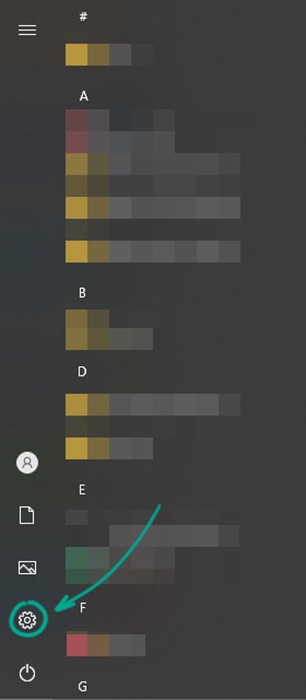
- Go to the Accounts section;
- Select Sign-in options in the menu at the left;
- Find Windows Hello PIN and click Add;
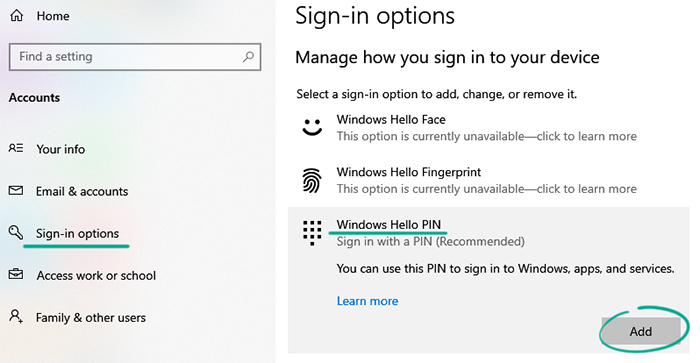
- Click Next. If necessary, enter the password for your local or Microsoft account.
- In the window that opens, select Include letters and symbols and create a secure combination.
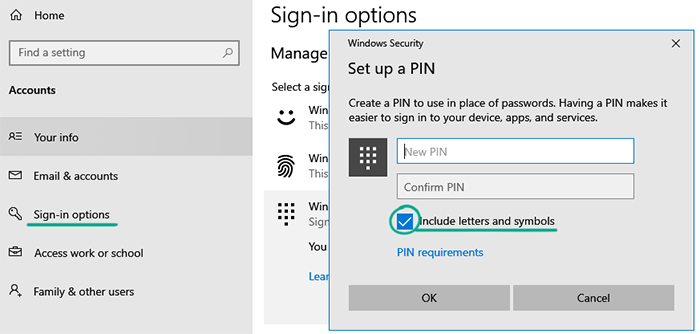
Use a short and simple PIN code only if you are certain that no one else will gain access to your computer. Otherwise, strangers can easily guess your password combination and get hold of your personal data.
You can use the same PIN to protect programs on your computer that require a login and online services — for example, OneDrive or Dropbox.
If you have a fingerprint scanner or one is built into your device, you can enable fingerprint authorization after creating a PIN code. It is not so easy to fake a fingerprint, so this method is safer than face recognition, which in some cases can be tricked, for example, by using a photo. Keep in mind though that Windows will send your biometric data and your sensor usage details to Microsoft.
To turn on fingerprint authorization:
- Open your system's Settings by clicking the cogwheel in the Start menu or using the Win key + I key combination;
- Go to the Accounts section;
- Select Sign-in options in the menu at the left;
- Find Windows Hello Fingerprint and click Set up;

- Click Get started.
- Enter the PIN code that you use to log in to the system;
- Scan your fingerprint;
- Click Close.
What for: To prevent strangers from gaining access to the system while you are away.
Windows 10 can lock your computer when you are not using it. This will prevent strangers from accessing your confidential information in your absence.
To configure the screen lock:
- Open your system's Settings by clicking the cogwheel in the Start menu or using the Win key + I key combination;
- Go to the Personalization section;
- Select Lock screen in the menu at the left;
- Click Screen saver settings;
- In the windows that opens, check the On resume, display logon screen box and select your preferred lock interval;
- Click OK.
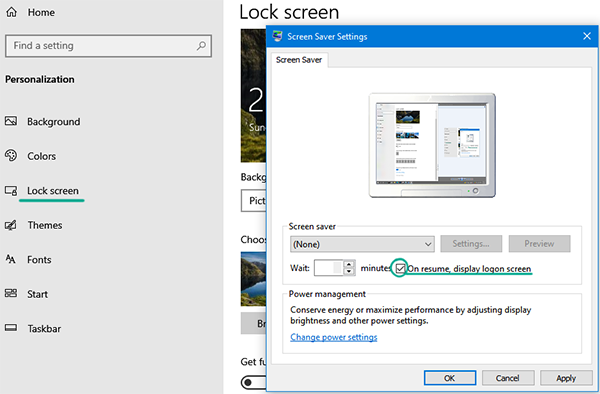
You can configure the lock settings so that a valid password is required to wake the system. This feature is enabled by default. However, it can be disabled. We recommend checking the settings and reactivating if necessary:
- Open your system's Settings by clicking the cogwheel in the Start menu or using the Win key + I key combination;
- Go to the Accounts section;
- Select Sign-in options in the menu at the left;
- If you see that Never is selected in the Require sign-in section, click the arrow to the right of this text and select When PC wakes up from sleep.
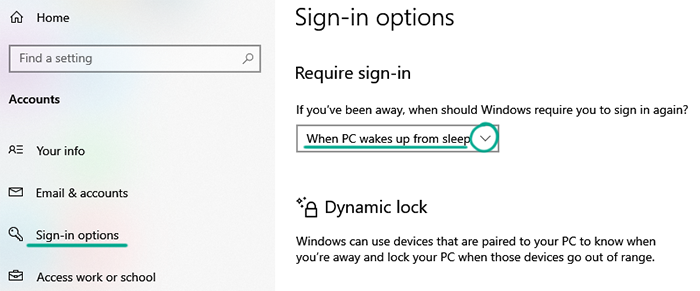
You can lock the computer manually by using the Win key + L key combination or in the Start menu:
- Open the Start menu;
- Click your profile icon;
- Select Lock.
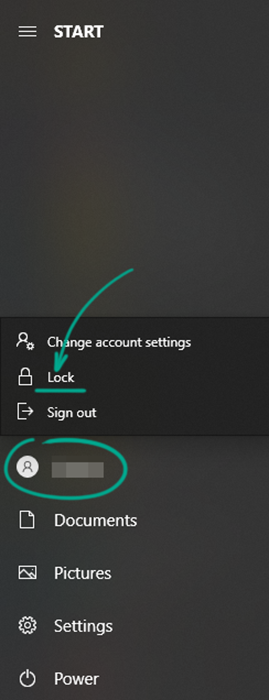
How to protect your data
open allWhat for: To lock your computer if you lose it.
Windows 10 regularly saves your device location so that you can find it. If you lose your computer or if it is stolen, you can track it and, if necessary, lock it. This feature is enabled by default, but we recommend checking your settings:
- Open your system's Settings by clicking the cogwheel in the Start menu or using the Win key + I key combination;
- Go to the Update & security section;
- Select Find my device in the menu at the left.
- Click Change and enable device search.
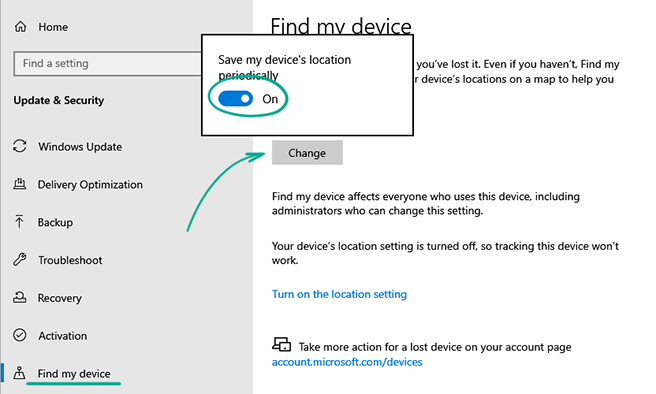
You can find and lock a lost device in the Devices section on the Microsoft Account page.
Remember that you must use the Microsoft user account that you used to log in to the lost computer to search for it. A lost device can send its location only if it is turned on and connected to the Internet.
Downside: Your computer's location will be sent to the company's server and stored on the device.




